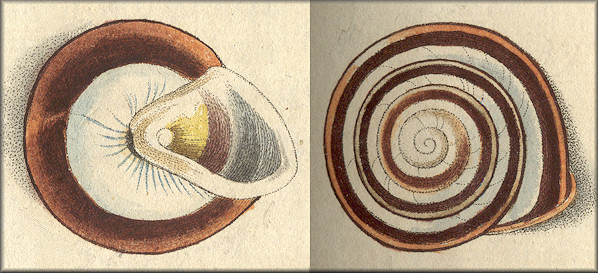|
The Galita Conundrum, or how many banded Caracolus are there? | |
|
by Harry G. Lee |
|
|
Recently David G. Robinson, the lead malacologist for the USDA (APHIS
PPQ NIS), which position makes him this country's alien mollusk
quarantine czar, asked webmaster Bill Frank about the different forms of banded
Caracolus, called "galitas" by Cubans according to the late Miami
shell dealer, Burton Anderson, which have become naturalized in SE
Florida. Dr. Robinson stated "I was looking at your Caracolus
pictures - I have three forms of this group from southern Florida: (a)
the dark one (that you are calling the C. marginella - Brickell
area) from the Fairchild Tropical Gardens, (b) the lighter one (that you
are calling the C. marginella - Wainright Park) from Old Cutler
Forest - comparing them with the ANSP collection, I thought these looked
similar to C. sagemon transitoria, and (c) the C. rostratus
from the Redland district area. Are there others? And have you sorted
out the taxonomy of this group? (e.g., what would you call the Puerto
Rican C. marginella?) ... Any perspectives would be
appreciated." I'll have to admit that I have swept this taxonomic poser under the carpet for years. I remember hitting some dead-ends while trying to sort out the many named "species" and moved on to less frustrating projects. But now Dr. Robinson's query, and the potential ecological/economic relevance of a better informed taxonomy, impelled the writer to re-investigate what would probably be a testy problem. A logical approach mandated a proper comprehension of the taxa involved .... a sort of paraphrase to the adage: "When in doubt, read the directions!" Thus a scrutiny of the basis for the main nominal taxa seemed a reasoned plan of attack. The three little essays that follow are the product of this investigation, and a response to Dr. Robinson's provocative question concludes the third. |
|
|
In search of the identity of Caracolus marginella (Gmelin, 1791) |
|
|
|
|
|
Original description by Johann Friedrich Gmelin (1791: 3622; species
162). Translation by H. G. Lee:
Born, I. A., 1780. Testacea Musei Caesarei Vindobonensis, quae jussu Mariae Theresiae Augustae. J.P. Kraus, Vienna. ii + 1-442 + 18 pls. + xvii [unpaginated indices]. Chemnitz, J. H., 1786. Neues systematisches Conchylien-Cabinet 9. Kaspischen Buchhandlung, Nürnberg, Germany. ? pp. + vignette 19 + pls. 103-136; figs. 875-1270. [not seen; see Richardson et al., 1979] [Gmelin, J. F.] Linné, C. a, 1791. Systema naturae 13th edition, volume 1, part 6: Vermes. Emanuel Beer, Leipzig. pp. 3021-3909 [Vermes testacea 3202-3748]. Online at < http://www.biodiversitylibrary.org/item/83098#5>. Richardson, L., R. T. Abbott, and G. M. Davis, 1979. Early references to the figures in the Conchilien Cabinet of Martini and Chemnitz: volumes I-XII. Tryonia 2(1-2): 1-427 + 432 pls., 70 vigns. Aug. 1. |
|


